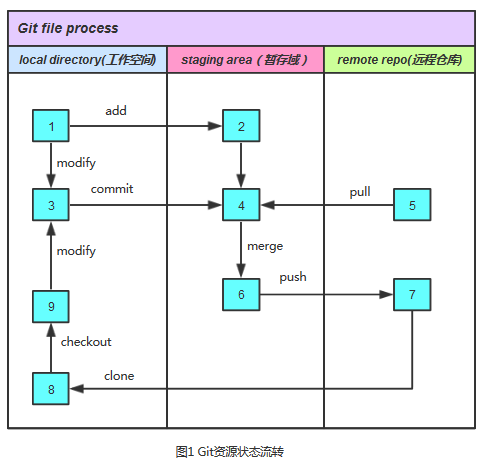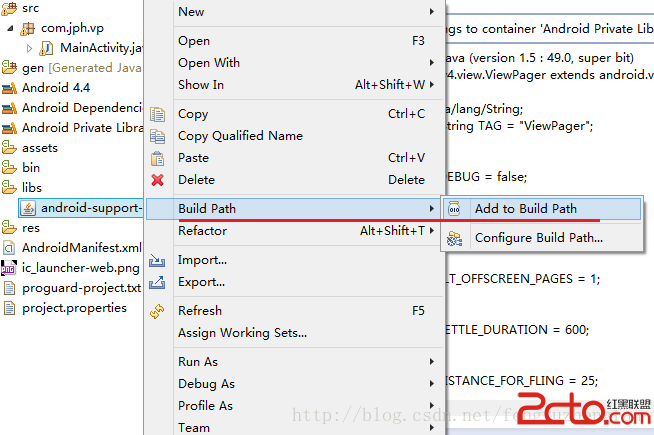編輯:關於Android編程
*注:可以用 adb logcat > 路徑/文件名 來保存,
此命令執行之時起的全部日志信息到一個文件裡,ctrl + C 結束日志輸出;
後面不加 > 路徑/文件名 的話,則在 stdout (終端窗口)中輸出!
例如:$ adb logcat -v long Checkin *:S > ~/桌面/log.txt
一、在 Java 與 C 語言中輸出日志:
1) Java 代碼在程序中輸出日志, 使用 android.util.Log 類的以下 5 個方法:
Log.v()、Log.d()、Log.i()、Log.w()、Log.e()。
分對應 Verbose、Debug、INFO、Warn、Error 的首字母。
例如:Log.i( "類::函數名", "日期_時間_源碼文件名_行號_日志信息內容" );
2) C 代碼在程序中輸出日志,使用 log 的 API 函數:
__android_log_write( 日志類型宏,日志標簽字符串,日志令牌內容字符串 );
需要:1. Android.mk 中添加 LOCAL_LDLIBS := -L$(SYSROOT)/usr/lib -llog
2. *.c 中添加 #include <android/log.h>
3. 日志類型宏有:
復制代碼 代碼如下:
// Android log priority values, in ascending priority order.
typedef enum android_LogPriority {
ANDROID_LOG_UNKNOWN = 0,
// only for SetMinPriority()
ANDROID_LOG_DEFAULT,
ANDROID_LOG_VERBOSE,
ANDROID_LOG_DEBUG,
ANDROID_LOG_INFO,
ANDROID_LOG_WARN,
ANDROID_LOG_ERROR,
ANDROID_LOG_FATAL,
// only for SetMinPriority(); must be last
ANDROID_LOG_SILENT,
} android_LogPriority;
二、logcat 使用方法:
Usage: logcat [options] [filterspecs]
用法: logcat [選項] [過濾說明]
options include:
選項包含:
-s Set default filter to silent.
Like specifying filterspec '*:S'
設置默認過濾為無聲的。
像指定過濾說明為 *:S ,見下面 過濾說明 部份詳述
-f <filename> Log to file.
Default to stdout
輸出日志到文件。
默認為 stdout
-r [<kbytes>] Rotate log every kbytes.
(16 if unspecified).
Requires -f
設置環形日志緩沖區的kbytes。
默認值為16。
需要和 -f 選項一起使用
-n <count> Sets max number of rotated logs to <count>, default 4
設置環形日志緩沖區的最大數目,默認值是4,需要和 -r 選項一起使用
-v <format> Sets the log print format, where <format> is one of:
設置 log 的打印格式, 格式有如下主要7種:(不能組合使用)
brief
process
tag
thread
raw
time
threadtime
long
-c clear (flush) the entire log and exit
清除所有 log 並退出
-d dump the log and then exit (don't block)
得到所有log並退出且不阻塞
-t <count> print only the most recent <count> lines (implies -d)
僅打印最近的由參數 count 指出的行數(必然包含 -d)
-g get the size of the log's ring buffer and exit
得到環形緩沖區的大小並退出
-b <buffer> Request alternate ring buffer, 'main', 'system', 'radio' or 'events'.
Multiple -b parameters are allowed and the results are interleaved.
The default is -b main -b system.
請求供替換的環形緩沖區,如:main,system,radio,events。
多個 -b 參數是被允許,並且結果是交錯輸出的。
-b main -b system 是默認的。
-B output the log in binary
輸出 log 到二進制文件中。
filterspecs are a series of <tag>[:priority]
過濾說明是一系列 <tag>[:priority]
where <tag> is a log component tag (or * for all) and priority is:
tag 是 eclipse 中 logcat 圖形界面中 Tag 的內容(或者有 * 表示全部),它之後的冒號(:)後面跟優先級:
日志類型標識符(優先級由低到高排列):
1. V — Verbose 詳細的 <- 最低優先權
2. D — Debug 調試
3. I — Info 消息
4. W — Warn 警告
5. E — Error 錯誤
6. F — Fatal 致命的
7. S — Silent 無聲的 <- 最高優先權
'*' means '*:d' and <tag> by itself means <tag>:v
* 意味著 *:d 且 單孤地 tag 意味著 tag:V
If not specified on the commandline, filterspec is set from ANDROID_LOG_TAGS.
如果在命令行上沒有詳細說明,過濾規格即是 ANDROID_LOG_TAGS 結果集。
If no filterspec is found, filter defaults to '*:I'
如果沒有過濾說明,過濾規格默認為 *:I
If not specified with -v, format is set from ANDROID_PRINTF_LOG or defaults to "brief"
如果沒有 -v 指定格式,將是 ANDROID_PRINTF_LOG 或 brief 格式集。
1) 只輸出指定 標簽 和 類型 的日志
格式:
adb logcat <日志標簽>:<日志類型標識符> <日志標簽>:<日志類型標識符> ... *:S
注:1. 可以寫多個 <日志標簽>:<日志類型標識符> 之間用空格分隔;
2. 最後必須是 *:S ,表示其它的都不要顯示出來
例如:
$ adb logcat dalvikvm:D Checkin:W *:S
注:adb logcat Checkin *:S =等同於=> adb logcat Checkin:V *:S
注:以上命令均沒加 -v 來指出日志格式,即默認為: ANDROID_PRINTF_LOG 或 brief 格式集。
2) 輸出指定 標簽 和 類型 的帶有格式的日志
注:以下測試日志內容為:test log format,
即 eclipse 中的 logcat 圖形界面裡的 Text 中的內容!
1. brief - 日志類型/日志標簽(進程ID): 日志內容
例如:$ adb logcat -v brief Checkin *:S
I/Checkin(24713): test log format
2. process - 日志類型(進程ID) 日志內容 (日志標簽)
例如:$ adb logcat -v process Checkin *:S
I(24713) test log format (Checkin)
3. tag - 日志類型/日志標簽: 日志內容
例如:$ adb logcat -v tag Checkin *:S
I/Checkin: test log format
4. thread - 日志類型(進程ID:線程ID)
例如:$ adb logcat -v thread Checkin *:S
I(24713:0x6089) test log format
5. raw - 日志內容
例如:$ adb logcat -v raw Checkin *:S
test log format
6. time - 日期 調用時間 日志類型/日志標簽(進程ID): 日志內容
例如:$ adb logcat -v time Checkin *:S
05-27 11:25:33.854 I/Checkin(24713): test log format
7. threadtime - 日期 調用時間 進程ID 線程ID 日志類型 日志標簽: 日志內容
例如:$ adb logcat -v time Checkin *:S
05-27 11:25:33.854 24713 24713 I Checkin: test log format
注:只有此種格式時 線程ID 為十進制數。
8. long - [ 日期 調用時間 進程ID:線程ID 日志類型/日志標簽 ] 轉行顯示 日志內容
例如:$ adb logcat -v long Checkin *:S
[ 05-27 11:25:33.854 24713:0x6089 I/Checkin ]
test log format
 Android組件popupwindow使用方法詳解
Android組件popupwindow使用方法詳解
先看效果: 現在很多的應用效果都需要做的炫些,像UC,以及天天靜聽,效果很炫的,源碼已經對外開放了,有興趣的可以去研究下的 上源碼main.xml&l
 Android仿QQ消息提示實現彈出式對話框
Android仿QQ消息提示實現彈出式對話框
本文在《7種形式的Android Dialog使用實例》在這篇文章的基礎進行學習,具體內容如下1.概述 android原生控件向來以丑著稱(新推出的Material D
 android Git命令家底兒及Git數據通信原理詳解
android Git命令家底兒及Git數據通信原理詳解
現在大部分使用的都是SVN,也有一部分遷移了Git,雖然挺好的,不過還有其它很多版本控制的工具,並沒有誰最好用,最重要的是適合自己的公司與團隊,效率和團隊是成正比了,重要
 Android關聯源碼support-v4,v7,v13源碼
Android關聯源碼support-v4,v7,v13源碼
在Android實際開發過程中往往會遇到使用v4,v7或v13兼容包中的一些類如ViewPager,Fargment等,但卻無法關聯源碼。 網上有很多解決